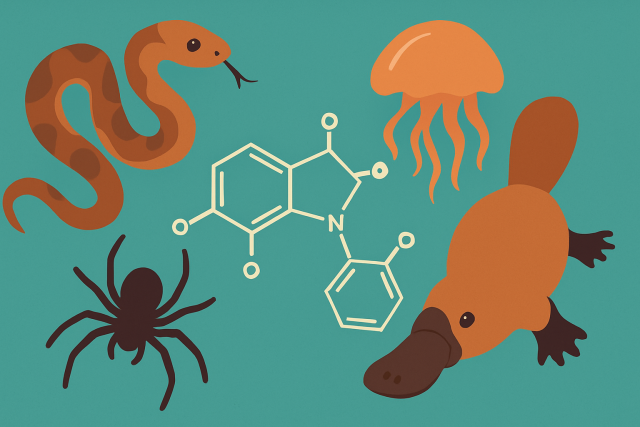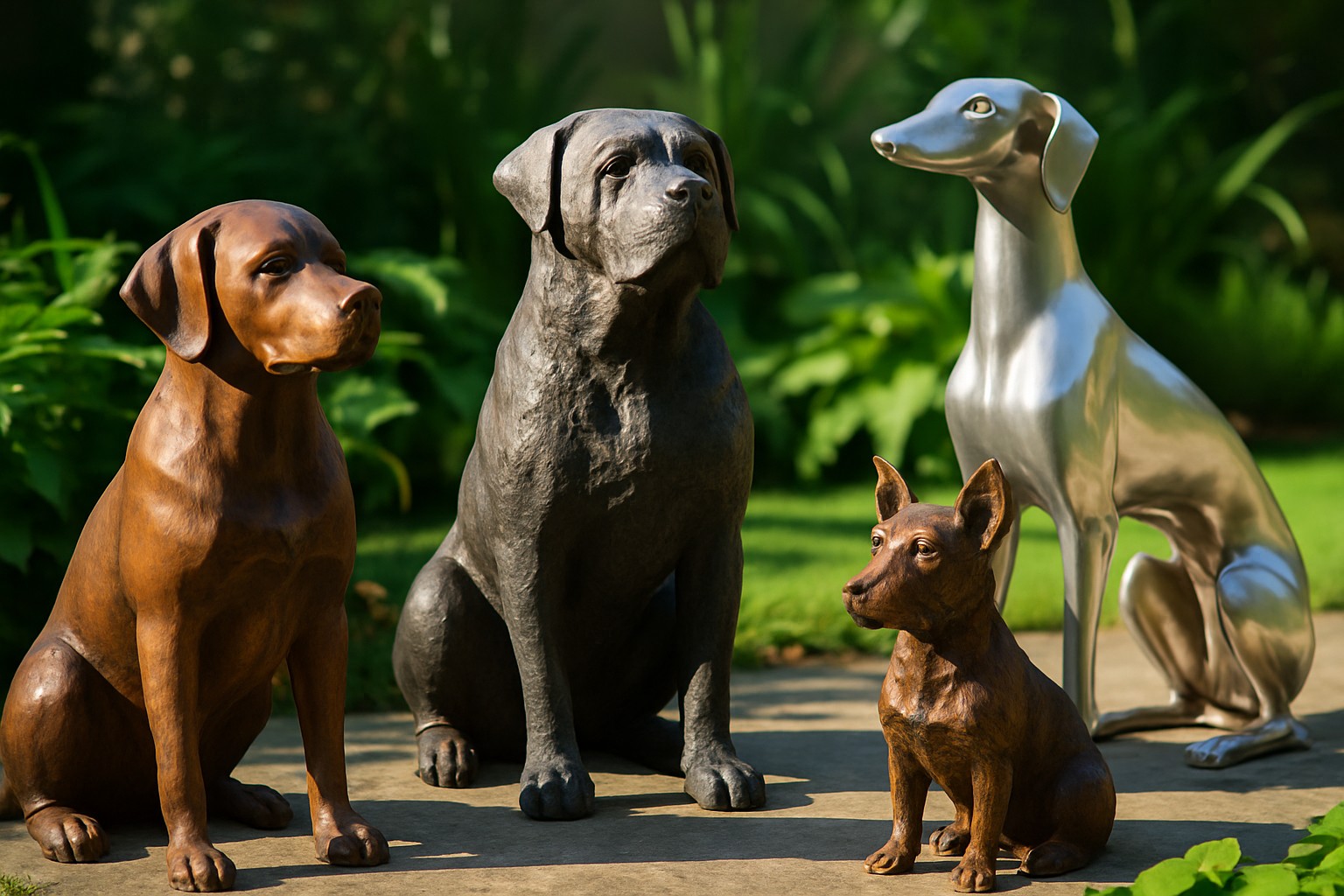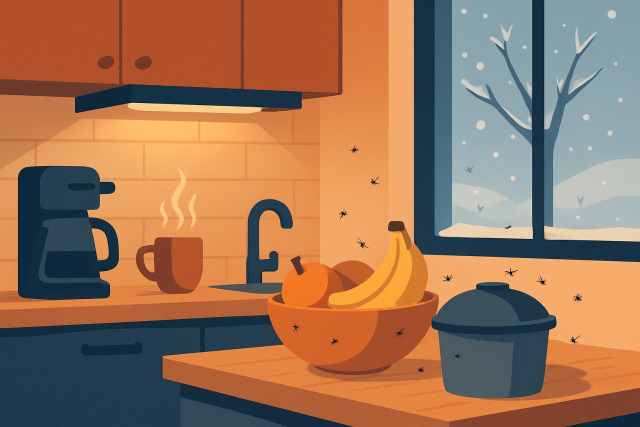
What Makes a Metal Dog Statue Unique and Durable?


Metal dog statues have won hearts worldwide thanks to their artistic flair and rock-solid durability. This article dives into the key factors that give metal dog sculptures their one-of-a-kind charm and impressive resilience.
What Are Metal Dog Statues and Why Do They Matter? Let’s dive into the story behind these charming sculptures and see why they’ve managed to snag a special place in our hearts and homes.
Metal dog statues are sculptures crafted mainly from various types of metal that capture dogs in styles ranging from strikingly realistic to delightfully artistic. They come in every size imaginable from charming little pieces you can tuck onto a table to grand installations designed to take center stage in outdoor spaces. Artists favor metal because it can be molded into intricate details and holds up well against the elements and everyday wear. Plus metal offers a variety of finishes and textures giving each statue its own unique personality.
Typical Metals Found in Dog Statues and What Makes Them Truly Stand Out
Several metals are commonly used for making dog statues, each bringing its own strengths and unique look and varying durability against the elements. Bronze tends to steal the spotlight thanks to its durability and warm hue everyone loves. Stainless steel offers a sleek modern vibe and resists corrosion. Aluminum is a featherweight champ—light and versatile for all kinds of creative ideas. Then there’s iron, especially good old cast iron, which carries classic, heavy-duty charm but often needs help to keep rust at bay.
| Metal Type | Durability | Corrosion Resistance | Appearance | Typical Uses | Estimated Longevity |
|---|---|---|---|---|---|
| Bronze | High | Good (forms a protective patina) | Warm brown-gold, timeless | Premium statues, both indoors and outdoors | 50+ years |
| Stainless Steel | Very High | Excellent | Bright, modern silver-gray | Contemporary art, outdoor displays | 70+ years |
| Aluminum | Moderate to High | Good | Lightweight silver | Large or lightweight sculptures | 20-40 years |
| Cast Iron | High (prone to rust) | Poor without protective coating | Rustic dark finish, often painted | Traditional garden statues | 30+ years with upkeep |
This table lays out the important differences between popular metals for dog statues, giving you a clear peek at how durability, looks, and upkeep tend to dance together in the real world.
What Really Makes a Metal Dog Statue Stand Out?
The uniqueness of metal dog statues springs from a blend of elements that come together to give each piece its own special character. It’s the artist’s vision and skill that truly shape the overall design, while the choice of metal finish and the patina add layers of depth and atmosphere that you don’t always notice at first glance.
- The artistic style you choose sets the tone by deciding whether the statue follows realistic anatomy or takes a playful turn with an abstract or stylized vibe.
- The materials you pick make all the difference in texture and color. Bronze offers a timeless warm glow while stainless steel feels cool and sleek.
- Finishing touches like patinas, polishing or powder coatings bring out visual effects and textures that catch the eye.
- Scale and proportions decide if a statue is a charming collectible or a commanding piece meant for outdoors.
- The degree of realism versus abstraction helps tell the story by nailing a precise likeness or delivering a creative artistic spin.
- Adding personalized touches like breed-specific markings, quirky poses or engraved names sprinkles in personality that makes each piece truly one of a kind.
For instance, an artist might painstakingly craft a metal dog statue that captures a Golden Retriever's warm soulful eyes and gentle fur flow. They use bronze with a rich deep patina that stirs a wave of warmth and nostalgia. On the flip side, another artist might create a sleek minimalist stainless steel sculpture that mirrors a Doberman's sharp alert posture and refined elegance. This sculpture emphasizes bold shapes rather than fine details.
Key Factors That Really Influence How Long Metal Dog Statues Last
Durability boils down to how well a metal dog statue can stand up to the daily grind, especially when it’s braving the great outdoors with rain and blazing sunlight or unpredictable temperature swings. Metals usually come out on top by shrugging off dents and scratches better than most materials. Plus, their knack for resisting corrosion keeps rust and environmental nasties at arm’s length.
They cleverly blend copper with tin to give the metal extra toughness and a fighting chance against corrosion.
How the metal is cast or fabricated makes all the difference. It shapes not just the final look but also the strength, helping dodge those pesky weak spots and flaws.
Protective coatings or treatments like powder coating, clear lacquers or chemical patinas play the unsung hero role by shielding the surface from oxidation and moisture like a trusty raincoat.
A bit of regular TLC such as cleaning and touching up finishes generally goes a long way in stretching the statue’s lifespan by keeping buildup and damage at bay.
Think salt air, humidity and pollutants throw a wrench in the works, speeding up deterioration if the metal isn’t given the proper care it deserves.
Take a stainless steel dog statue for example. Thanks to its high chromium content it naturally resists rust. Meanwhile, bronze statues develop a charming patina over time that acts like a cozy shield against corrosion. Then you have surface treatments like powder coating that bring more depth of defense against moisture and UV rays. This helps the finish avoid fading and flaking.
Craftsmanship paired with a savvy touch of material science tends to whip up metal sculptures that aren’t just built to last—they often stand firm for decades, shrugging off the weather without so much as losing their shape or that unmistakable spark of character.
The Art and Craft Behind Metal Dog Statues
Making a metal dog statue involves a few key steps from start to finish, each with its own quirks. Artists typically start by sketching designs and crafting prototypes to nail down the shape and details—like ironing out wrinkles before the big show. Next, molds are created based on the casting method they choose. Then comes the hot and heavy part: melting metals and either pouring them into molds or shaping them through welding and forging. After cooling, the statue gets its final makeover with polishing, applying patina and adding protective coatings—touches that make it shine and help it stand the test of time.
- Kick things off with rough sketches and prototype creation to nail down the shape and finer details—think of it as sketching the blueprint of your masterpiece.
- Whip up molds tailored to the casting method you’re using whether that’s the trusty sand, the precise investment or the flexible silicone-based ones.
- Heat up the metal to the perfect temperature then carefully pour it into the molds or fuse the pieces together with skilled welding—this part’s where the magic really happens.
- Add finishing touches like polishing, grinding and tidying up any pesky casting flaws because perfection takes extra elbow grease.
- Finally, give the piece personality with surface treatments like patinas, lacquers or powder coatings—they not only jazz up the look but also keep the metal protected for the long haul.
Precision in manufacturing makes sure every detail is captured just right. The finishing process is a game changer for both the statue's unique charm and its staying power. Take a carefully applied patina for example. It can make those details pop and add colors that often fade with cheaper finishes. On the flip side a sloppy finish might leave the metal vulnerable to corrosion which nobody wants.
Care and Maintenance Tips to Keep Your Metal Dog Statues Looking Their Best (and Happiest)
To keep metal dog statues looking their best and lasting long, a bit of regular TLC goes a long way. This usually means giving them a gentle clean sometimes, shielding them from harsh weather, and tackling any nicks or scratches as soon as they appear.
- Give the statue a good once-over regularly using a soft cloth and mild soap and water to keep dirt from settling where it should not.
- Avoid harsh abrasive cleaners because they can scratch the surface or strip away protective coatings.
- Inspect the statue every season for signs of corrosion or cracks that might sneak up on you.
- Reapply protective coatings or wax finishes to lock in moisture and keep UV rays from taking a toll.
- Place the statue somewhere it will not face heavy rain, snow or salty air to give it shelter from the worst weather.
Common Misunderstandings About the Durability and Uniqueness of Metal Dog Statues That People Often Get Wrong
You’d be surprised how many people assume metal dog statues are maintenance-free or that all metals used in sculptures age the same way. It’s a common misconception that a sculpture’s charm hinges solely on the artist’s signature and overlooks the role of its design and chosen materials. To add to the mix, patinas often get a bad rap because many mistake them for damage. In fact, these natural coatings can protect and even jazz up a sculpture’s look.
- Metal dog statues definitely need a bit of TLC to keep rust at bay and looking sharp. They aren’t the kind you can just set and forget.
- Not all metals are cut from the same cloth. Factors like the alloy blend and the finish play a starring role in how long they’ll stand up to the elements.
- What truly gives a statue its charm isn’t just size or shape. It’s the thoughtful design, skilled craftsmanship and any personal touches you throw in.
- Patina usually serves as Mother Nature’s protective shield rather than a sign of wear or neglect.
- Just because a statue carries a heftier price tag doesn’t mean it’s built to last forever. Understanding the materials and how to look after them often matters more.
The Lasting Appeal of Choosing a Metal Dog Statue—Why They Keep Stealing Our Hearts
Metal dog statues combine artistic charm and sturdy materials with a timeless appeal. They are not just eye-catching decorations but also heartfelt gifts for dog lovers. They have a wonderful knack for capturing emotions and quirky breed traits along with a touch of artistic flair that really sticks around.
Learn More
- The American Foundry Society - Your Go-To Hub for Metal Casting Insights
- The Sculpture Foundation - All About Metal Art and Sculpture, with a Dash of Inspiration
- Garden Design Magazine - The Insider’s Guide to Outdoor Metal Sculptures That Really Stand Out
- The Metropolitan Museum of Art - A Treasure Trove of Stunning Metalwork Collections






